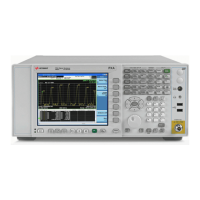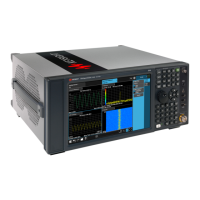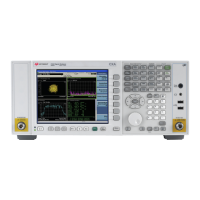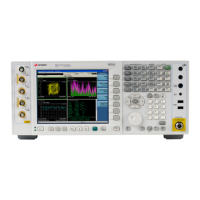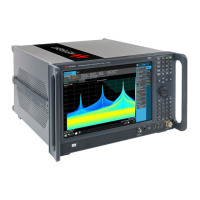252 Keysight N9038A MXE Service Guide
RF Downconverter Section
RF Downconverter Section Troubleshooting
A13 RF Front End Assembly
There are two different A13 RF Front End assemblies used in the N9038A - one
for instruments with Option 503, 508, or 526 and one for instruments with
Option 544. There are also multiple frequency bands for each instrument, the
number of which will depend on the frequency range option the instrument
has. Information on the number of bands for the different frequency range
options as well as the frequency range covered by each of these bands can be
seen in Table 6-1.
There are 3 different aspects of the A13 RF Front End assembly functionality
that can be verified with the procedures in this section. They are:
1. Assembly Initialization
2. Low Band Signal Path (20 Hz to 3.6 GHz)
3. High Band Signal Path (3.6 GHz and higher)
Assembly Initialization
Before the A13 RF Front End assembly will function properly it needs to
initialize itself when the instrument is turned on and be recognized by the
instrument software. To verify that this has happened look at the instrument
Hardware Information screen. To view this information press System, Show,
Hardware. Once you do this you will see a listing of instrument hardware
assemblies that are installed. The A13 RF Front End assembly should identify
itself on this list as Front End. If this assembly does not identify itself the cause
for this will need to be determined before any other troubleshooting is
performed. The most probable causes for this type of a problem would be that
the A13 RF Front End assembly itself is defective.
Refer to Chapter 15, “Block Diagrams.”.
Since the instrument communicates with the A13 RF Front End assembly through the A15 Front
End Control assembly, be sure that the A15 Front End Control assembly is initializing properly
before replacing an A13 RF Front End assembly for not initializing properly.
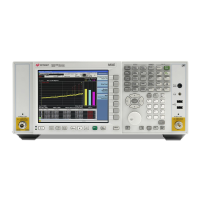
